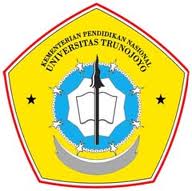Anda belum Log-in!
Silahkan Log in
Selamat Datang di Portal Digital Content Publisher
Senin , 15 September 2025
Perpustakaan sebagai jantung pendidikan tinggi di Indonesia, harus mampu memberi kontribusi yang berarti bagi pelaksanaan proses belajar mengajar di perguruan tinggi.
di-posting oleh 140231100104 pada 2018-07-31 08:50:09 • 369 klik
REALISASI PENGGUNAAN ALOKASI DANA DESA UNTUK PEMBANGUNAN DESA (Studi Kasus : Desa Sambiroto Kecamatan Padas Kabupaten Ngawi)
Village Fund Allocation For Village Development (Case Study: Sambiroto Village, Padas Sub-District, Ngawi District)
disusun oleh YENITA RAHMAWATI
| Subyek: | ALOKASI DANA DESA PEMBANGUNAN DESA |
| Kata Kunci: | Alokasi Dana Desa Partisipatif Akuntabel Transparan Pembangunan Desa |
[ Anotasi Abstrak ]
Penelitian ini bertujuan untuk mengetahui apakah dengan adanya Alokasi Dana Desa yang diberikan kepada desa, maka mampu meningkatkan pembangunan desa dengan realisasi penggunaanya yang memperhatikan prinsip pengelolaan anggaran yaitu partisipatif, akuntabel, dan transparan. Jenis Penelitian ini merupakan penelitian deskriptif kualitatif dengan metode yuridis normatif. Teknik pengumpulan data menggunakan studi kepustakaan dan studi lapangan. Fokus penelitian meliputi Peraturan Perundang-Undangan yang mengatur Alokasi Dana Desa, Asas Pengelolaan Anggaran, dan Pembangunan Desa. Berdasarkan hasil penelitian yang menggunakan landasan peraturan yang berlaku, wawancara, dan dokumen perencanaan pembangunan. Bidang yang dapat dibiayai dengan ADD bidang penyelenggaraan pemerintah desa sebesar 51,13%, bidang pelaksanaan pembangunan 44,10%, bidang pembinaan masyarakat 0,12%, dan bidang pemberdayaan masyarakat sebesar 3,53%. Tujuan dari penggunaan ADD yang terlaksana yaitu meningkatkan pembangunan infrastruktur perdesaan, pengalaman nilai-nilai keagamaan, sosial dan keswadayaan gotong-royong masyarakat. Pembangunan yang sudah terlaksanan diantaranya pembangunan fisik berupa ketersedian infrstruktur jalan pavingisasi, talud (Batas ukuran jalan/penahan tanah), drainase pertanian, pembangunan gedung PAUD, dan anggaran untuk honor guru PAUD.
Deskripsi Lain
This study aims to determine whether the existence of Village Fund Allocation granted to the village, then able to increase the village development with the realization of its use that pay attention to the principles of budget management that is participatory, accountable and transparent. This type of research is a qualitative descriptive research with normative juridical method. Data collection techniques used literature studies and field studies. The research focus includes Legislation Regulating the Allocation of Village Funds, Principles of Budget Management, and Village Development. Based on the results of the study using the applicable legal basis as well as from interviews, and development planning documents. All areas that can be funded by the Village Fund Allocation have been able to run, with 51.13% of village administration, 44.10% development, 44.10% 0.12%, and community empowerment area of 3.53%. The objective of the use of Village Fund Allocation in Sambiroto Village is to increase rural infrastructure development, improve the experience of religious values, socio-culture in order to achieve social improvement, and encourage the increase of self-help and mutual help. The development that has been implemented by using the Village Fund Allocation is the physical development in the form of infrastructure of pavingisasi road, talud (Limit of road size / retention of land), agricultural drainage, construction of Early Childhood Education building, and budget for teacher fee of Early Childhood Education.
| Kontributor | : Selamet Joko Utomo, S.E., M.E. |
| Tanggal tercipta | : 0000-00-00 |
| Jenis(Tipe) | : Text |
| Bentuk(Format) | |
| Bahasa | : Indonesia |
| Pengenal(Identifier) | : TRUNOJOYO-Tugas Akhir-13605 |
| No Koleksi | : 140231100104 |
Ketentuan (Rights) :
2018
 Download File Penyerta (khusus anggota terdaftar)
Download File Penyerta (khusus anggota terdaftar) 1. TRUNOJOYO-Tugas Akhir-13605-140231100104_Cover.pdf - 781 KB
1. TRUNOJOYO-Tugas Akhir-13605-140231100104_Cover.pdf - 781 KB 2. TRUNOJOYO-Tugas Akhir-13605-140231100104_Abstract_TOC.pdf - 170 KB
2. TRUNOJOYO-Tugas Akhir-13605-140231100104_Abstract_TOC.pdf - 170 KB 3. TRUNOJOYO-Tugas Akhir-13605-140231100104_Chapter1.pdf - 157 KB
3. TRUNOJOYO-Tugas Akhir-13605-140231100104_Chapter1.pdf - 157 KB 4. TRUNOJOYO-Tugas Akhir-13605-140231100104_Chapter2.pdf - 181 KB
4. TRUNOJOYO-Tugas Akhir-13605-140231100104_Chapter2.pdf - 181 KB 5. TRUNOJOYO-Tugas Akhir-13605-140231100104_Chapter3.pdf - 113 KB
5. TRUNOJOYO-Tugas Akhir-13605-140231100104_Chapter3.pdf - 113 KB 6. TRUNOJOYO-Tugas Akhir-13605-140231100104_Chapter4.pdf - 153 KB
6. TRUNOJOYO-Tugas Akhir-13605-140231100104_Chapter4.pdf - 153 KB 7. TRUNOJOYO-Tugas Akhir-13605-140231100104_Chapter5.pdf - 344 KB
7. TRUNOJOYO-Tugas Akhir-13605-140231100104_Chapter5.pdf - 344 KB 8. TRUNOJOYO-Tugas Akhir-13605-140231100104_Chapter6.pdf - 241 KB
8. TRUNOJOYO-Tugas Akhir-13605-140231100104_Chapter6.pdf - 241 KB 9. TRUNOJOYO-Tugas Akhir-13605-140231100104_Chapter7.pdf - 200 KB
9. TRUNOJOYO-Tugas Akhir-13605-140231100104_Chapter7.pdf - 200 KB 10. TRUNOJOYO-Tugas Akhir-13605-140231100104_Chapter8.pdf - 212 KB
10. TRUNOJOYO-Tugas Akhir-13605-140231100104_Chapter8.pdf - 212 KB 11. TRUNOJOYO-Tugas Akhir-13605-140231100104_Conclusion.pdf - 82 KB
11. TRUNOJOYO-Tugas Akhir-13605-140231100104_Conclusion.pdf - 82 KB 12. TRUNOJOYO-Tugas Akhir-13605-140231100104_References.pdf - 92 KB
12. TRUNOJOYO-Tugas Akhir-13605-140231100104_References.pdf - 92 KB 13. TRUNOJOYO-Tugas Akhir-13605-140231100104_Appendices.pdf - 2646 KB
13. TRUNOJOYO-Tugas Akhir-13605-140231100104_Appendices.pdf - 2646 KB Dokumen sejenis...
Dokumen sejenis...Tidak ada !
 Dokumen yang bertautan...
Dokumen yang bertautan...- PARTISIPASI MASYARAKAT DALAM RENCANA PEMBANGUNAN DESA DI DESA BANYUWANGI KECAMATAN MANYAR KABUPATEN GRESIK
- PARTISIPASI MASYARAKAT DALAM PERENCANAAN PEMBANGUNAN DESA (Studi Kasus : Desa Sambeng Kecamatan Kasiman Kabupaten Bojonegoro)
- Analisis Hubungan Alokasi Dana Desa dengan Pembangunan Desa (Studi Kasus di Desa Sabiyan Kecamatan Bangkalan Kabupaten Bangkalan
- MEMAKNAI PERAN KLEBUN DALAM MENINGKATKAN PEMBANGUNAN DESA (Studi Kasus Desa Pernajuh Kecamatan Socah Kabupaten Bangkalan)
- Partisipasi Masyarakat Dalam Pembangunan Desa (studi kasus: Desa Tambelangan Kecamatan Tambelangan Kabupaten Sampang)
 Kembali ke Daftar
Kembali ke Daftar 